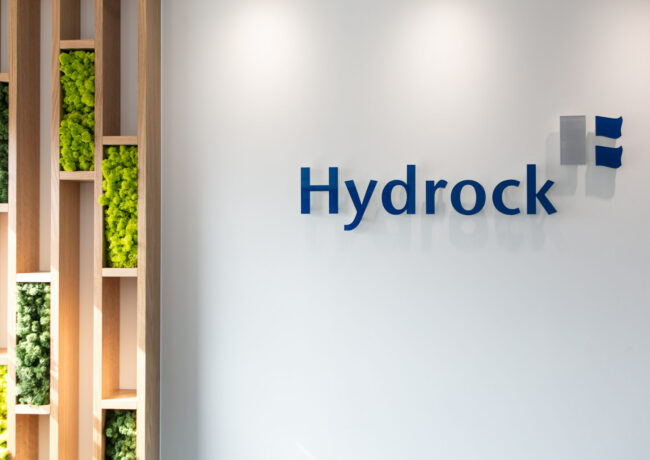Winners and losers from govt’s draft business rates list
The recently released list shows an average rateable value decrease of 9.9% for the retail sector in the North West, while the region’s industrial sector saw its values increase by an average of 23.2%.
The Valuation Office Agency published its draft changes in rateable value of rating lists for England and Wales on Thursday. After taking time to digest its contents, Place reached out to a trio of business rates experts to find out who the winners and losers were from the list – and what it means for the North West property sector.
Retail
Each of our experts agreed that this list and last week’s Autumn Statement were filled with good news for the retail sector.
However, Richard Roberts, principal director at Roberts Vain Wilshaw, noted that it may not be as good as it seems.
The Autumn Statement included the retail discount increasing from 50% to 75%. Roberts said that this was “almost an irrelevance to multi-site operators” since the discount was capped at £110,000 per business rather than per store.
Still, there is no denying that the retail sector was the big winner in the draft rates list.
By Colliers’ calculations, Manchester Arndale saw a 34% decrease in its rents.
Colliers’ head of rating, John Webber, said that the Arndale would not be the only retailer with a notable decrease.
“We are expecting to see substantial business rates bills reductions across England and Wales, not just on high street locations but in retail parks and shopping centres and other out-of-town locations,” Webber said.
Ryan Jones, head of rating in the North at Cluttons, urged retailers to not start counting their eggs before they hatch.
“The 2023 rating list values are based upon the rental values as at 1 April 2021, with the backdrop of Covid the new rating list would have been difficult to compile given it is based on transactional evidence,” Jones said.
“The sheer lack of transactions taking place around the valuation date may not give a true picture of the market at that time and allow correct values to have been applied. From considering a random selection of client premises, in particular in the retail sector, the expected revised values may not be as low as we would have expected them to be.”
Industrial
Logistics was one of the hardest hit sectors by the new ratings list. The sector saw an average increase of 27.1% in its rateable value nationwide, and an average increase of 23.2% in the North West.
In the North West, this meant Trafford Park in Manchester’s rates went up by 30%, according to Colliers’ data. In North Wales, Wrexham Industrial Estate increased by 33%.
Roberts noted that The Hut Group’s Icon site at Manchester Airport went up 53% to £7.24m.
“In Warrington, large distribution sheds at Omega and Gemini Trade Park both went up 25%,” Roberts said.
While the change in value must sting, it was not very surprising according to Webber.
“Many occupiers of these properties were aware they had been paying too little for too long in terms of business rates, particularly given the extension of the list to six years and have been preparing to see substantial rises,” he said.
“Now businesses in the sector have the certainty to plan for the year ahead.”
Stadia
In the North West, the stadium sector may have a reason to complain more about the changes than the industrial one.
“The impact on some of the region’s landmark buildings is quite phenomenal,” Roberts said.
Manchester United’s Old Trafford’s rateable value increased by 54%. That makes its rateable value £8.7m, on par with Arsenal’s Emirates Stadium. Liverpool’s Anfield was up 55% to £5.8m.
Offices
Offices also increased, but not as severely. The rateable values grew by 17.2% on average in the North West.
In Manchester, One St Peter’s Square saw a 5% increase in its rateable value, according to Colliers. Roberts’s data showed that rateable value for offices at Exchange Quay in Salford grew between 40% to 80% depending on their size.
Meanwhile, offices at Centre Park in Warrington were down 12%, Roberts said.
Also in Warrington, Bridgewater Place’s Birchwood Park had the same value as 2017. However, two occupiers had their rateable increase by around 68%, according to Roberts. He said that this brought those offices in line with similar properties.
“It’s a good example of why it’s important not to just look at the headline increases,” Roberts said.
Overall
“It is a massive relief that the government finally listened to us and other industry bodies about out-of-control business rates rises following the next valuation,” Webber said.
“By freezing the multiplier and removing downwards transition [the government] has at last recognised that the business rates system cannot be revenue neutral without causing significant hardship.”
Roberts was warier about this change.
“The freezing of the business rates multiplier for the third-year running isn’t quite as generous as it might seem,” Roberts cautioned. “The overall pool of rateable value has increased from circa £65bn to £70bn, so the increased revenue is providing part of the £13.6bn in savings over the next three rate years.”
Jones emphasised that this is just a draft list.
“Time will tell however if these revised figures are correct and greater analysis is required over the coming months,” said Jones.
There’s now a clear action plan for ratepayers, according to Jones.
“The key message to ratepayers is to check their current rateable value before the deadline of 31 March 2023,” he said. Even those who have decreased rateable values may be due an even greater reduction, he noted.
The major good news from the announcement, however, is the transitional relief scheme redesign.
Roberts described the transitional relief changes as “a very sensible approach” since it caps those facing substantial increases while also allowing those with decreased rateable values to benefit immediately.
Read the government’s factsheet on business rates changes.





The Government still needs to review the residential Council tax system. Crazy that Council tax costs are still based upon what a house was worth in 1991, when different areas have changed so much in value since.
By Robert Williams